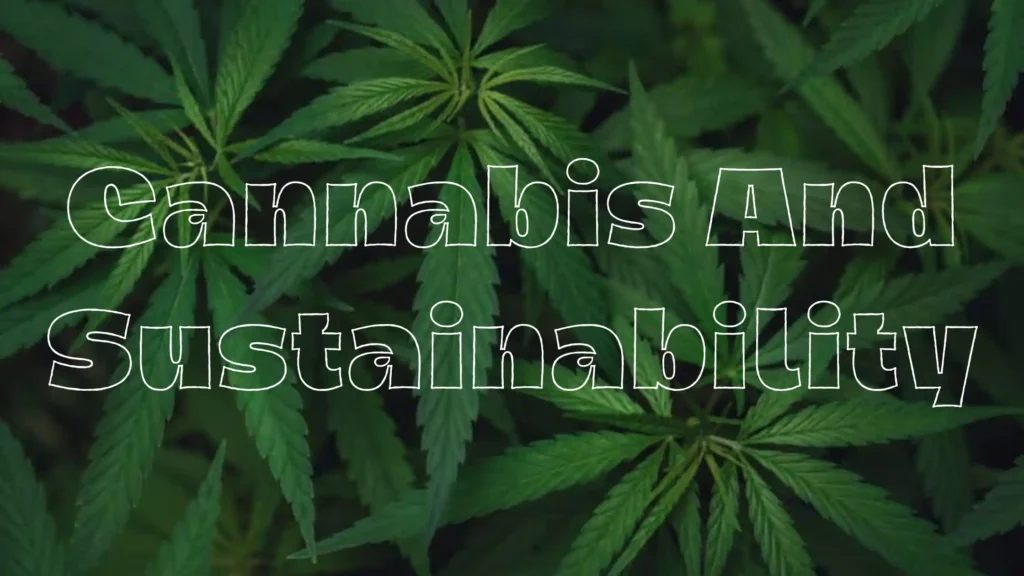Introduction
With the development of the cannabis industry, people are paying more and more attention to possible improvements in development and production. In fact, many those who advocates anti marijuana use on account of its impact on environment and health, can make them understand about the commercial advantages and its health benefits, if use of prescription. There are many industries which are investing substantial resources to make cannabis industry an environment friendly and sustainable.
In fact, numerous anti-cannabis proponents are arguing their opinion on the basis of drug and addictive natural of cannabis. Industries who are working in the field of commercial cannabis, however trying to make those anti cannabises to see the larger picture of cannabis cultivation and its medicinal uses with environment sustainability.
Ways to Improve Sustainability in Cannabis Industry
Starting with energy utilization, reports published by New Frontier Financials in 2016 measured that cannabis cultivation’s yearly consume of electricity is about one percent of the United States’ total electric production, which generally valued to $6 billion, or electricity for 1.7 million homes. Most of the electricity consumption is utilized to supply high-intensity lights for green house cultivation. These sorts of lights consume some large units of power and produce require temperature. This ensuing warmth makes the suitable conditions for HVAC to grow and to keep the plants under a controlled temperature environment. This makes to climb up the already gigantic power bill. A few cannabis cultivators opt for the on-site generator set, mostly coal or gas-based generators to diminish their power bills but this strategy is a huge source of CO2 emission.
LED Lighting and cannabis cultivation
To reduce high-energy consumption, an arrangement that numerous cannabis cultivators are implementing is LED lighting. In spite of the fact that it may be a little exasperation that LED lights for the most part have longer lifetimes, require barely any maintenance, create negligible to no warmth, and a 60%-70% more efficient in electricity consumption without compromising the luminous intensity. Another good thing about switching to LED innovation is less requirement of supplements and fertilizer because of the water evaporation. Evaporation rates is decreased on account of temperature that the plant, soil, and water containers is maintained.
Feasible Water Usage
Water is a necessity for all of us. Base on credible source, we are able to assess that a total of 0.025-0.0309kg of water per plant, per day, are required for cultivation of cannabis. Cannabis cultivator groups and agriculture farm affiliations are pushing farmers toward lesser water consumption per plant, per day variant. Other than the amount of water required for healthy development, we got to put more thought into how the amount of pesticides and abnormal pH in wastewater affects treatment plants. Many cultivators have gigantic reverse osmosis system in place. Closed-circuit desalination (CCD) and reverse osmosis (RO) frameworks are ways to recover generally 75%-97% of the water used within the farming area, permitting reuse and reclaiming clean water if/when it goes to waste.
Effective Squander Management
Seed to sale tracking system for legal markets permits cannabis companies precisely track all products of their cultivation. And whereas manufacturers, cultivators, and medical stores are bound by the state laws, much of that squander chances are closes up. According to “The Stranger”’ 1.7 million pounds of cannabis plant products were made by Washington State’s authority from cannabis industry since 2014. This achievement comes from the reality that numerous cultivators and manufactures chose to follow government law and not indulge in illegal holdings and manufacturing.
Push to Outdoor Farming of Cannabis for Sustainability
Implementing solutions to problems related to cannabis cultivation and product manufacturing offers a brighter future for the farmers, customer and sellers. The costs are minimal, which enables the end customer get the product in lower price. The business ecosystem is sustainable and also bright because farmers do not have to bear any additional burden of cost in terms of pollution, airborne diseases, rainfall scarcity and transportation.
Indoor cannabis growing is currently on the trend. But others are in favour of growing cannabis outdoors because of the other issues discussed above against growing it indoors. Another reason is that growing in green house is seen as a big improvement, when you can use regenerative growing methods that allow growers to help the environment and have no issue in cannabis cultivation.
Conclusion
In the conclusion, the finest of the ways to make the cannabis industry more economical, would be to legalize the plant on government level. Once it is no longer a Schedule 1 medicate, farm land will not be utilized to cultivate the plant in illegal manner, without any knowledge to government and law enforcing departments. If it illegal to cultivate, it creates more chaos and becomes a dark underground business. Administration has the power and mechanism to control and direct the benchmarks for the use and carrying of addictive substances. Finally, Farmers have the licence from authority to cultivate, farmers will freely engage in their farm activity and support the authority. They may utilize outdoor fields or nurseries which both depend more on natural light. No longer they will need to utilize artificial light for green house facilities. No more will they have to utilize off-grid electricity from diesel or propane electric generator. Cannabis cultivation would no longer be within the grey business area. In fact, it could be seen to all of us and surely appreciated by everyone if this development happens. It may also be done without harming the environment and planet on which we live.

